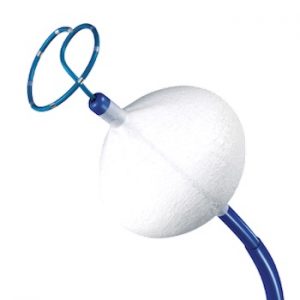Cryoablation for AFib and Other Arrhythmias
Similar to heat-based radio frequency ablation, balloon cryoablation uses targeted cold temperature therapy to ablate or destroy heart tissue that is causing an abnormal electrical signal. Cryoablation is performed using minimally invasive catheter technology and offers similar results to cardiac catheter ablation, as far as safety and efficacy.
How The Procedure Works
The patient is brought to a specially outfitted electrophysiology or EP lab for treatment. Under anesthesia, a small incision is made in the groin area and a catheter sheath is placed into a blood vessel and threaded up to the heart. Dr. Banker specializes in low or no fluoroscopy when guiding the catheter – this exposes the patient to very little (or no) radiation during the procedure.
 Once the catheter is in place, a cold-gel-filled balloon is deployed treating a wide area of problematic heart tissue. One benefit of using cold therapy is that the area can be partially cooled to see if normal electrical rhythm is restored. If the partial cooling works, a complete ablation can be performed.
Once the catheter is in place, a cold-gel-filled balloon is deployed treating a wide area of problematic heart tissue. One benefit of using cold therapy is that the area can be partially cooled to see if normal electrical rhythm is restored. If the partial cooling works, a complete ablation can be performed.
Risks of a cryoablation
Much like heat-based catheter ablation, the risk profile of cryoablation is relatively low and revolves around the inherent risks of a catheter-based procedure – including insertion and guidance of the catheter up to the heart. Rarely, a patient may experience pain, blood loss or infection at the catheter insertion site. Damage to blood vessels or the heart is also possible, but extremely rare.
As with any other procedure, experience and knowledge plays a key role in helping to mitigate these risks. A highly trained and experienced EP like Dr. Banker can mitigate some of these risks and increases the efficacy of the procedure.


